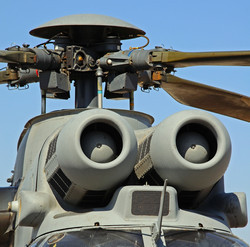Advanced wind tunnel testing of helicopter air intakes
The EU's Clean Sky Joint Technology Initiative is the most ambitious aeronautical research programme ever launched in Europe. Its focus is on reducing noise and emissions associated with air transport, with a dedicated section devoted to rotorcraft. A particular sub-project is aimed at improving the aerodynamic characteristics of helicopter and tiltrotor aircraft fuselages, including installation effects. The ATHENAI (Aerodynamic testing of helicopter novel air intakes) project aided this effort by conducting wind tunnel tests of air intakes. Air flow to the engine has important implications for engine efficiency, fuel consumption and emissions. Researchers successfully developed a new full-scale wind tunnel model of a lightweight twin-engine helicopter comprising a fuselage cowling part, all air intake parts and flow passages. The model is highly modular, thereby offering the possibility to test different air intake parts. ATHENAI members analysed the aerodynamic properties of different baseline engine air intake configurations, placing focus on flow guiding elements such as fillets, vanes, spoilers and scoops. Using a five-hole pressure probing system, they conducted flow field measurements at the aerodynamic interface plane. Additionally, steady and unsteady surface pressures on cowling and air intake regions were recorded. Data analysis and evaluation provided a valuable database and helped draft guidelines for helicopter air intake design. Wind tunnel tests are opening the way to a new generation of lightweight twin-engine helicopters that should burn less fuel and operate more efficiently. Improving helicopter engine integration brings us a step closer to achieving the Clean Sky goals for greener rotorcraft.
Keywords
Wind tunnel, helicopter, air intakes, engine installation, aerodynamic, rotorcraft

